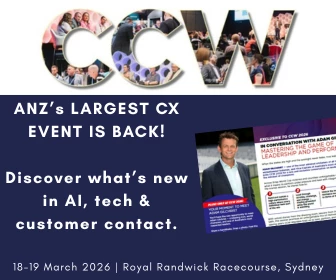Annette Franz: Informing Your CX Strategy with Consumer Journey Maps
Forbes Councils Member, CCXP; Founder + CEO: CX Journey Inc.
Add bookmark
The following is an abbreviated excerpt from my book, Customer Understanding: Three Ways to Put the “Customer” in Customer Experience (and at the Heart of Your Business).
Journey mapping is the most critical and pivotal component in any customer experience transformation. An in-depth understanding of the experience today—what’s going well and what isn’t—is the only way to really drive change going forward. This is what journey maps provide and, hence, why journey maps and the journey mapping process are often called the backbone of customer experience management.

What do I mean by that?
As Matt Wujciak, CCW Digital writer and analyst recently stated:
“In the past decade, there has been a behavioral economic and cultural shift in the way that consumers and service-oriented brands interact. As digital transformation becomes an exponentially growing component of the CX economy, consumers are demanding more. They’re demanding the FP3 [frictionless, personalized, predictive and proactive] experience. Defining a strategic consumer journey mapping process is the most effective way to keep your target market at the heart of your business... and deliver individualized experiences for the consumers you're serving.”
Read More: Putting Employees At The Heart Of Your Business (With Annette Franz)
As Matt implied, the journey mapping process informs and supports so many parts of your customer experience strategy that it literally is the backbone of your business; those parts include:
Executive Alignment
- Helps you build the business case and get executive commitment for the work that lies ahead
- Explains the what and the why behind the customer experience today
- Brings them closer to the customer and allows them to walk in customers’ shoes
- By opening their eyes and building that commitment, it ensures all executives are aligned on the customer-centric vision—it’s the mindset shift, inside out to outside in
Brand Promise
- Helps you communicate, translate, and amplify the brand promise for your employees
- Aligns the experience with the brand promise
- Identifies where the promise is kept or broken
- Teaches employees about—and aligns them with—the brand promise
Organization Adoption and Alignment
- Teaches employees about the customer and the experience
- Provides a clear line of sight for employees to the customer
- Helps employees understand how they contribute to—and impact—the customer and the experience
- Builds empathy for the customer
- Helps create a universal language for employees to talk about the customer
Employee Experience
- Identifies broken or missing tools, resources, policies, or processes that hinder the experience for the employee (and for the customer)
- Helps the organization align training, tools, and resources to customer needs and expectations
- Highlights how and where the employee experience intersects with the customer experience
Customer Understanding
- Helps the organization understand what the customer is doing, thinking, and feeling as she interacts with the brand
- Helps everyone understand who the customer is and identifies her needs, expectations, preferences, and jobs to be done
- Identifies listening gaps and provides co-creation opportunities with customers
- Identifies key moments of truth (when enriched with data)
Process Improvements
- Becomes the root cause analysis for customer-facing issues
- Identifies operational (in) efficiencies and cost savings
- Is a decision support tool to help prioritize improvement areas
- Facilitates breaking down or connecting organizational silos
Read More: Special Report Series: Omnichannel Chatbots (Sponsored by Salesforce)
There are many more ways that journey mapping supports and informs your customer experience strategy, including designing new experiences for tomorrow. I wrote a whitepaper a few years ago called 30+ Reasons to Map Customer Journeys, which includes more details on this.
Read More: Q&A With TGI Friday's Chief Experience Officer
When journey mapping is viewed (and used) not only as the process that it is but also, especially, as the backbone of customer experience management, it becomes an ongoing practice and process in your organization. When it becomes part of the conversation, when it feeds into all of the things mentioned here (plus in the whitepaper), then it becomes a part of the fabric of the organization.
Are you convinced yet that journey maps are a powerful tool and process in your customer experience toolbox?






























